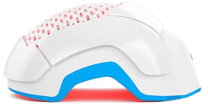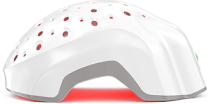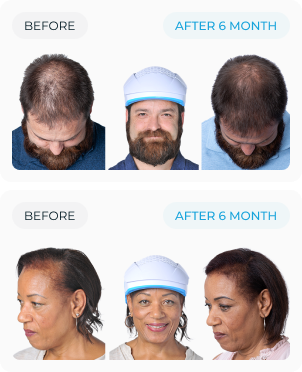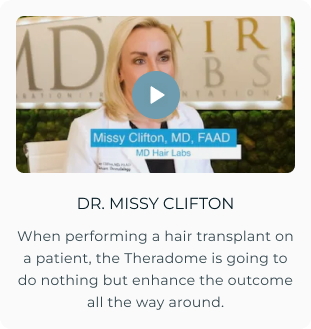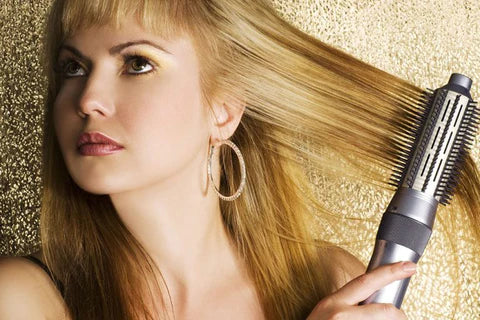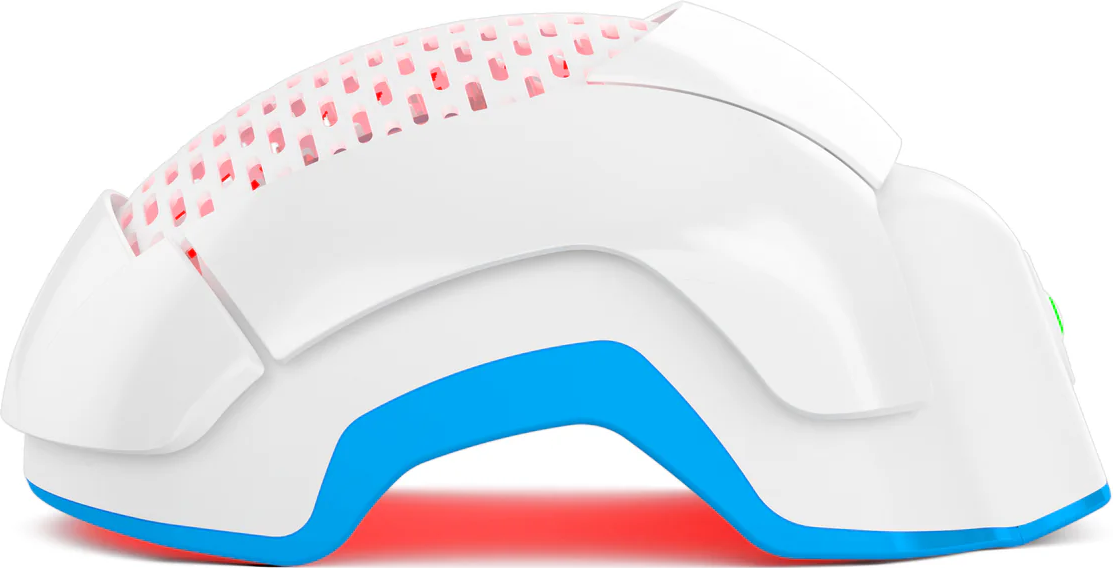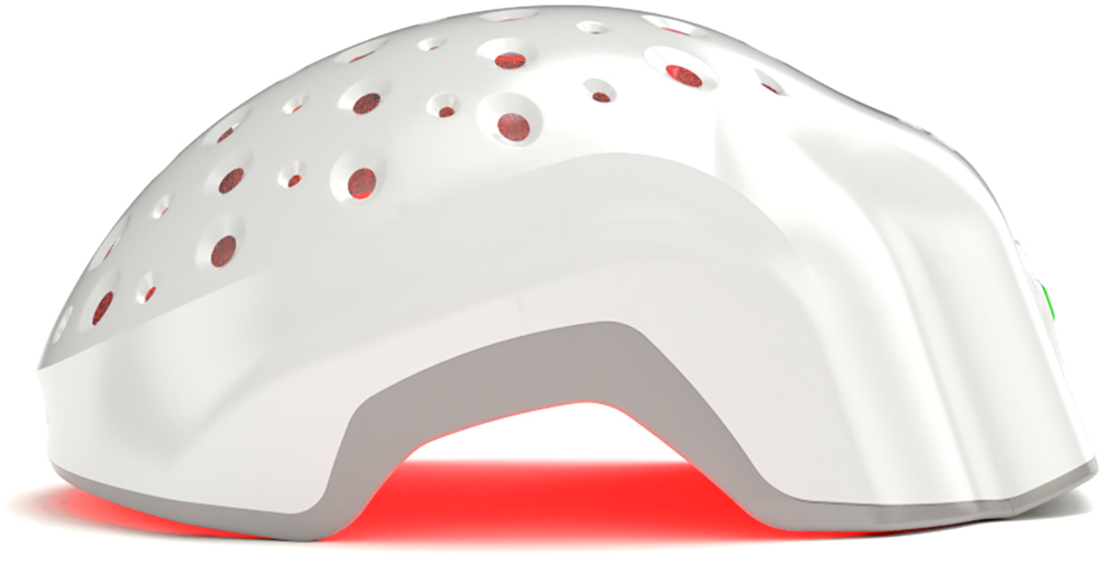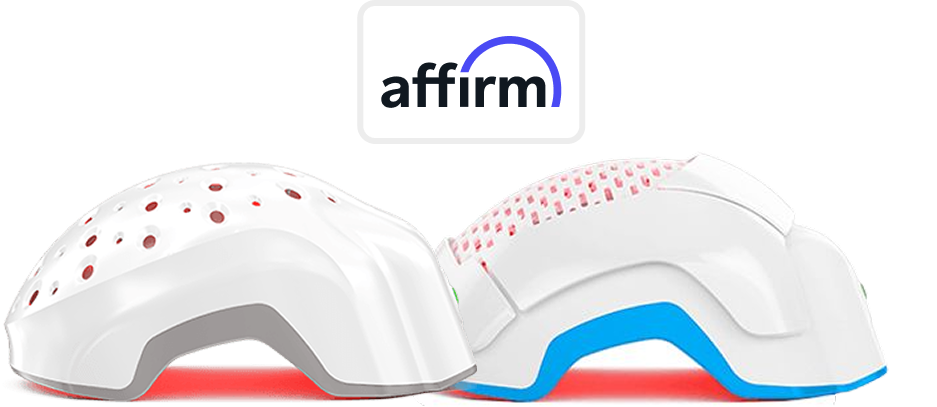Hair grows in a cycle made up of four distinct phases: anagen, catagen, telogen, and exogen. Understanding each stage can offer valuable insight into how hair develops and sheds.
In this blog, we'll take a closer look at these phases and explore their unique characteristics. Knowing which stage your hair is in can help you choose the most effective products and treatments.
What Are the 4 Stages of Hair Growth Cycle?
The hair growth cycle is a natural process through which hair grows, rests, and eventually sheds. At any given time, the thousands of strands on your scalp are in different phases of this cycle, which typically spans 2 to 7 years per strand.
Hair doesn’t grow continuously—instead, it moves through distinct stages. Let’s break down the four main phases of the hair growth cycle:
1. Anagen Phase (Growth Phase)
The anagen phase is the first and longest stage of the hair growth cycle, lasting anywhere from 2 to 7 years. During this active growth phase, hair follicles produce new cells, and strands grow about 1 centimeter per month. Approximately 90% of the hair on your scalp is in the anagen phase.
When something disrupts this phase and halts hair growth, it’s known as anagen effluvium—a condition often associated with sudden hair loss, typically due to factors like chemotherapy, radiation, or toxic exposure.
2. Catagen Phase (Transition Phase)
After the anagen phase, hair enters the catagen phase—the short transitional stage of the growth cycle. This phase lasts about 2 to 3 weeks and involves only 1–2% of the hair on your scalp.
During catagen, hair growth comes to a stop. The lower part of the follicle shrinks, and the hair detaches from its blood supply. This marks the beginning of the formation of a club hair, a hair that is no longer growing but remains anchored in the follicle.
3. Telogen Phase (Resting Phase)
The telogen phase, also known as the resting phase, is when hair follicles take a break from growth. The club hairs formed during catagen remain in place but are not actively growing. About 8–9% of the hairs on your scalp are in this stage, which typically lasts for 2 to 3 months.
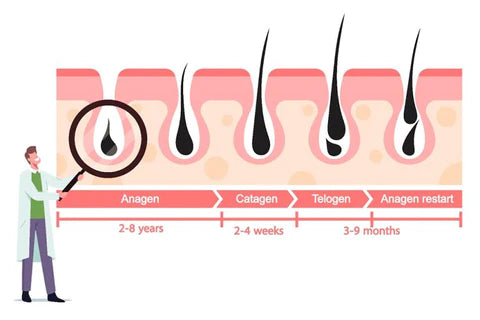
Telogen effluvium occurs when more than 10% of your hair enters this phase simultaneously, leading to noticeable shedding. This condition is usually temporary and can be triggered by chronic stress, surgery, illness, or a high fever. In most cases, hair growth returns to normal within about six months.
4. Exogen Phase (Shedding Phase)
The exogen phase is the final stage of the hair growth cycle and involves the natural shedding of hair. During this phase, old hair strands are released from the scalp to make way for new growth. It’s a normal part of the cycle that typically goes unnoticed—unless more shedding than usual occurs.
Although it can be alarming to see increased hair fall, especially during brushing or washing, exogen-related shedding is part of the hair’s natural renewal process and is generally no cause for concern.
What Factors Affect the Length of the Hair Growth Cycle?
Several factors can influence the duration of the hair growth cycle:
- Genetics: Each person is born with a predetermined cycle length, which varies from individual to individual.
- Age: As we get older, hair tends to grow more slowly, and the growth phase may shorten over time, particularly during and after menopause.
- Lifestyle choices: Poor nutrition and sudden weight loss can disrupt the cycle, leading to increased shedding or slower growth.
- Overall health: Chronic stress, hormonal imbalances (such as thyroid disorders), and conditions like diabetes can negatively affect the hair cycle.
- External factors: Frequent heat styling, harsh chemical treatments, and UV exposure can damage the hair and scalp, weakening follicles and disrupting the hair growth cycle.
How to Support Hair Health During Hair Growth Stages?
There are several ways to support hair health throughout the different stages of the hair growth cycle:
Practice gentle hair care
To keep your hair healthy during its growth cycle, wash it regularly with a gentle shampoo. Avoid shampoos containing harmful ingredients that can contribute to hair loss. Regular washing helps keep your scalp and hair clean, reducing the risk of infection or dandruff, which can lead to hair loss or breakage.
Hair is at its weakest when wet, so if you need to comb or brush it, use a wide-tooth comb and be very gentle. Avoid rubbing your hair with a towel; instead, let it air dry naturally. Also, minimize the use of harsh chemicals like bleach and relaxers, as they can weaken and damage your hair. Finally, try to avoid tight hairstyles, since they can cause traction alopecia.
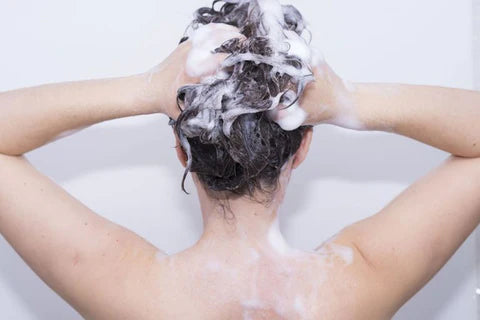
Eat a nutritious diet
Protein is a key building block for hair, and getting enough of it can help promote hair growth and strength. Eating lean meats, fish, soy, or other protein sources supports healthy hair and can help reduce or slow down hair loss.
Also, keep in mind that hair shafts are about 25% water, which is why drinking at least 4 to 8 glasses of water a day is important for healthy hair growth. If you’re already experiencing hair loss, consider cutting back on alcoholic beverages, as alcohol can slow down the hair growth process.
Massage your scalp with essential oils
Massaging your scalp with essential oils can help the hair follicles stay active. Some of the best oils to use include sesame, almond, or lavender.
Stay hydrated
Your hair shafts are made up of 1/4 water, which is why you should be drinking at least 4 to 8 glasses of water every day to promote healthy hair growth.
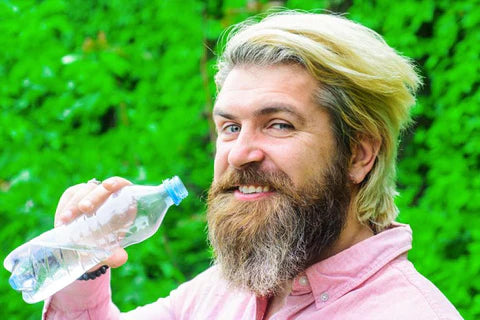
De-stress
Research has shown a clear link between stress and hair loss. One of the best ways to reduce stress is through meditation. Other alternative therapies, like yoga, can also help lower stress levels.
Moreover, exercise plays an important role in managing stress, balancing hormones, and reducing hair loss. No matter what, don’t rely on smoking to de-stress because cigarettes reduce blood flow to the scalp, which can slow down hair growth.
Promote New Hair Growth and Prevent Hair Loss
If you’re struggling to treat or prevent hair loss—or want to encourage a healthy new hair growth cycle—Theradome could be the perfect solution. The Theradome laser helmet uses advanced at-home low-level laser therapy (LLLT) technology to restore hair.
Laser phototherapy is ideal for people experiencing receding hairlines, thinning hair, or who want to strengthen their existing hair. Theradome is designed to stop and treat early stages of hair loss—stages I-1 to II-2 for women and IIA to V for men. It’s also perfect for busy lifestyles, as it eliminates the need for frequent clinic visits.
The Theradome PRO LH80 features 80 proprietary VL680 lasers — the most powerful on the market — delivering excellent results with fewer treatments. Meanwhile, the Theradome EVO LH40 includes 40 of the same high-performance VL680 lasers, offering the same great results as the PRO LH80 in a more budget-friendly model.
Say yes to the hair you’ve been dreaming of! Order your Theradome laser helmet today and experience the power of cutting-edge technology. Don’t let hair loss hold you back—step into a future with fuller, healthier hair.


